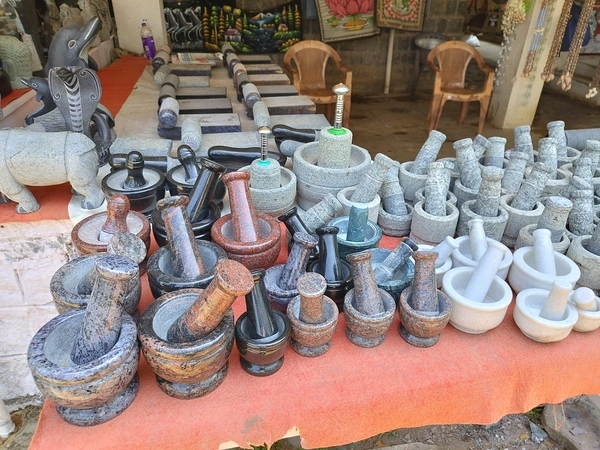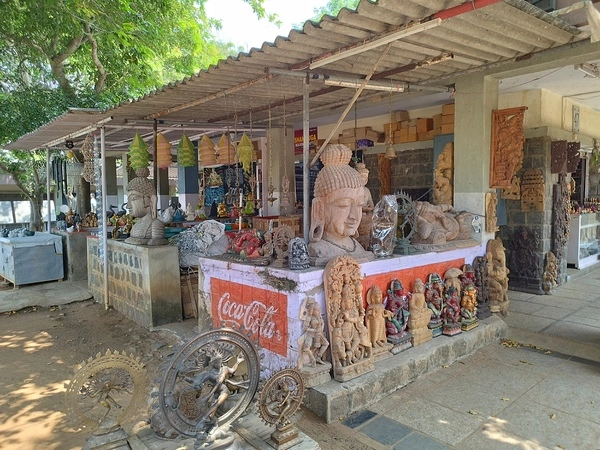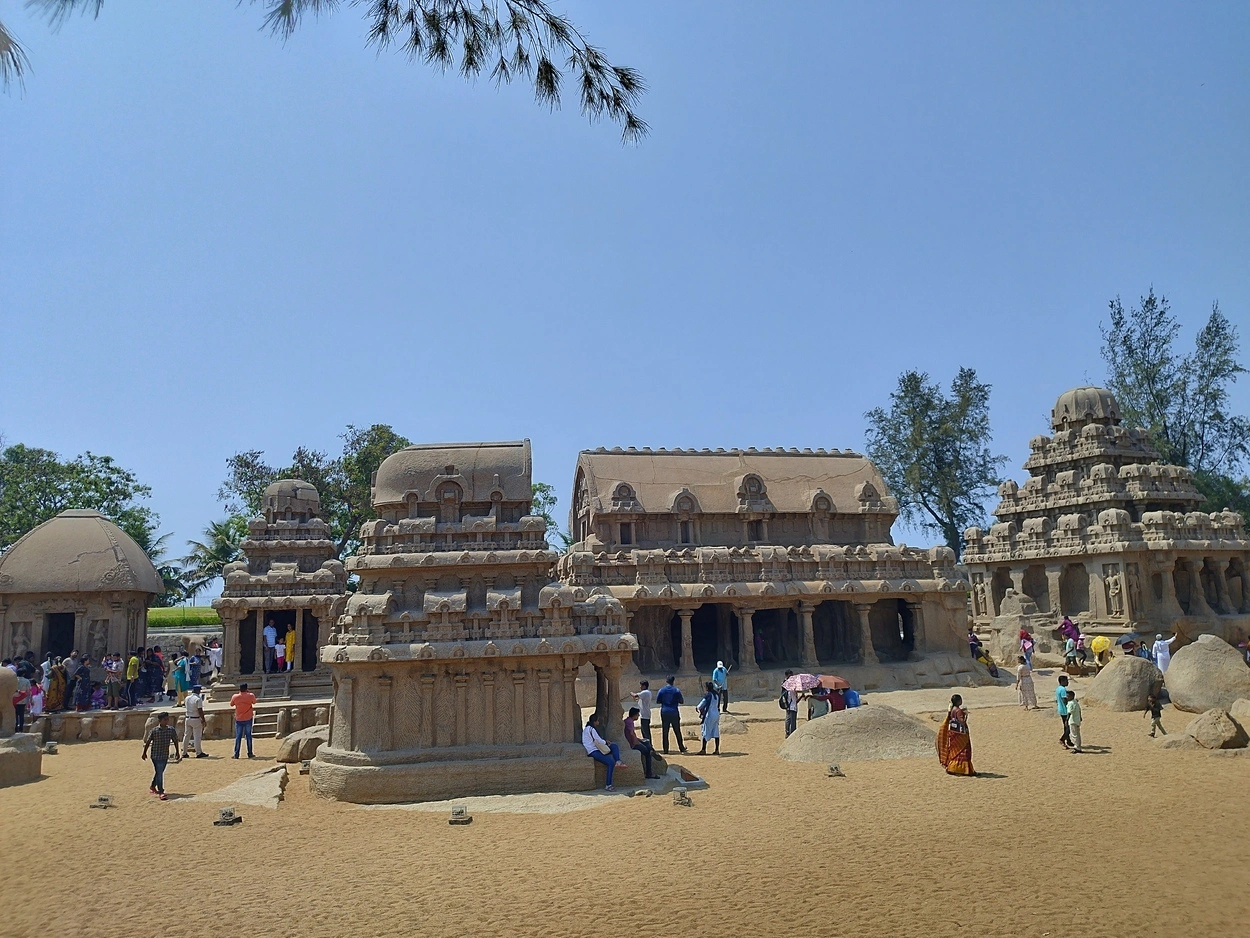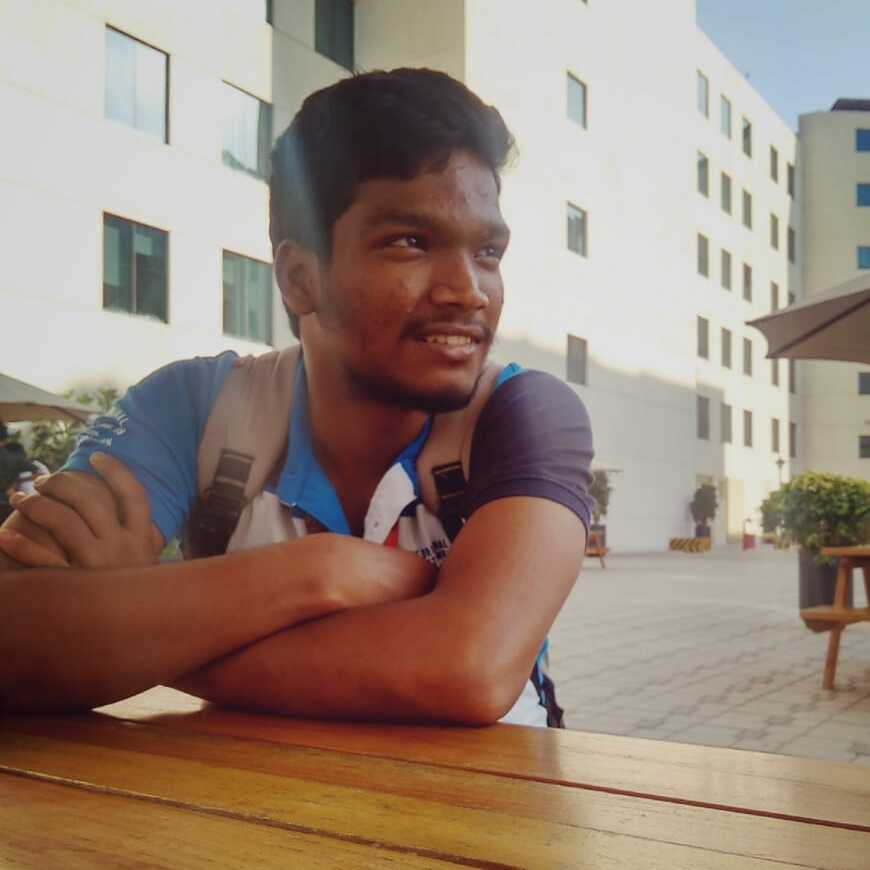The Pancha Rathas is a collection of monoliths, carved during the 7th century under the rule of the Pallava King Narasimhavarman-1. It is located at Mahabalipuram which is an East Coast port town of the Chengalpattu District in the Indian state of Tamil Nadu. It is 56 km away from Chennai and 32 km away from Chengalpattu.
Visitors are allowed from 6:00 A.M to 6:00 P.M.
Pancha means five and Rathas means vehicles. So, Pancha Rathas loosely translates to Five Vehicles. However, there are more than 5 monoliths at the unfinished site, including an Elephant sculpture. A monolith is a structure carved entirely out of a single stone.
Entry ticket.
The site is managed by the Archeological Survey of India, and they issue entry tickets at the ticket counter, opposite the site. The ticket costs ₹40 per person, for Indian citizens. Foreigners have to pay ₹600 for the same. Entry is free for anyone below the age of 15.
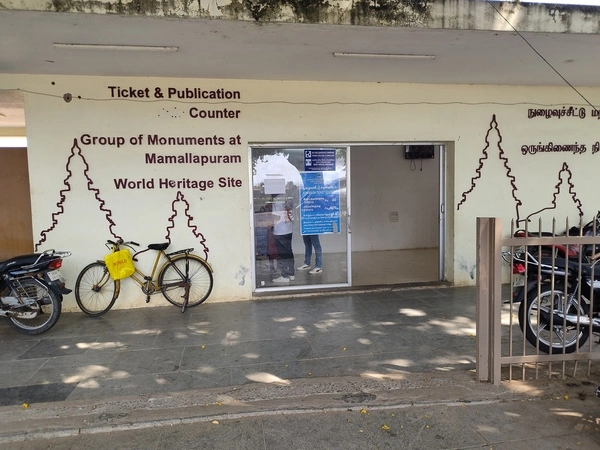
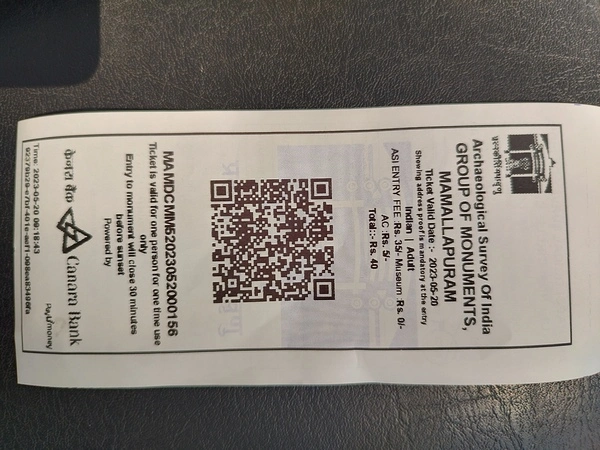
Keep these tickets safe until you have explored all the sites at Mahabalipuram since it is enough and valid at all the other sites like Shore Temple and Krishna’s Butterball.
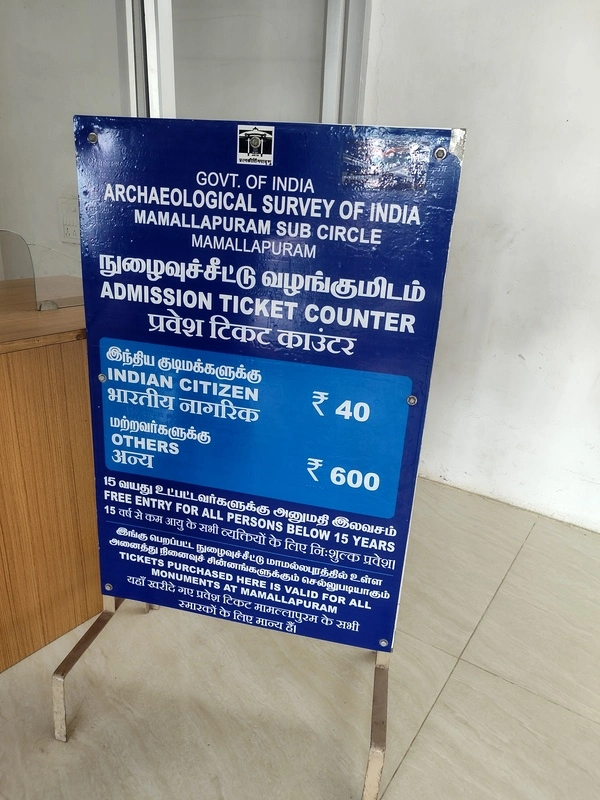
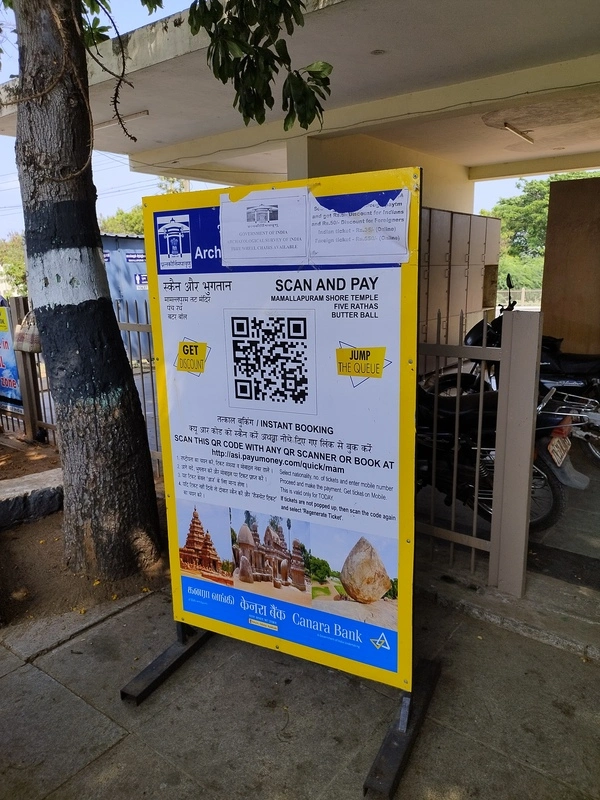
The ticket is stamped at the entrance of each site, so we can enter a particular site only once with a single ticket. The tickets can also be booked online by scanning the QR code on the banner kept outside.
List of Rathas
Each of the 5 Rathas is named after the Pancha Pandava brothers and their common wife Droupadi, who are all characters from the Indian epic, Mahabharatham. All the Rathas are placed in a single line, except for one. Behind the collection of monoliths, there is a huge lawn that is watered regularly but doesn’t allow visitors to enter.
Droupadi Ratha
This is the first monolith in the order of the Rathas placed on the campus. It is named after the Mahabharatham character Panchali alias Droupadi, who is the common wife of all the Pancha Pandava brothers, originally married to Arjuna - the third of the 5 brothers.
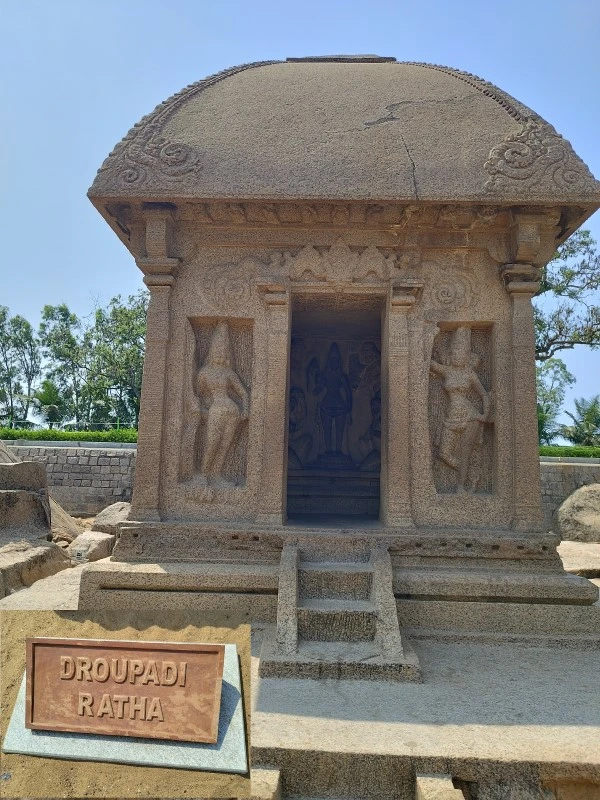
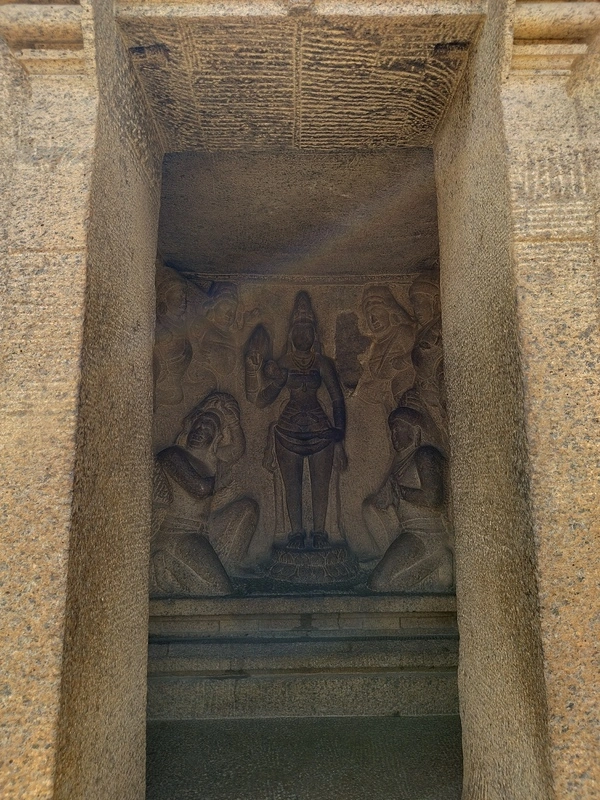
Of the 5 Rathas, this is the smallest one and has multiple carvings of a woman in a dance pose. The structure has an opening and an inner section which also has a carving of a goddess being worshiped. Visitors are allowed to go inside and take pictures.
Arjuna Ratha
Arjuna Ratha is the second monolith in line of the Rathas. It is named after the third son of Pandu, who is the father of the Pancha Pandavas. He is a master at archery.
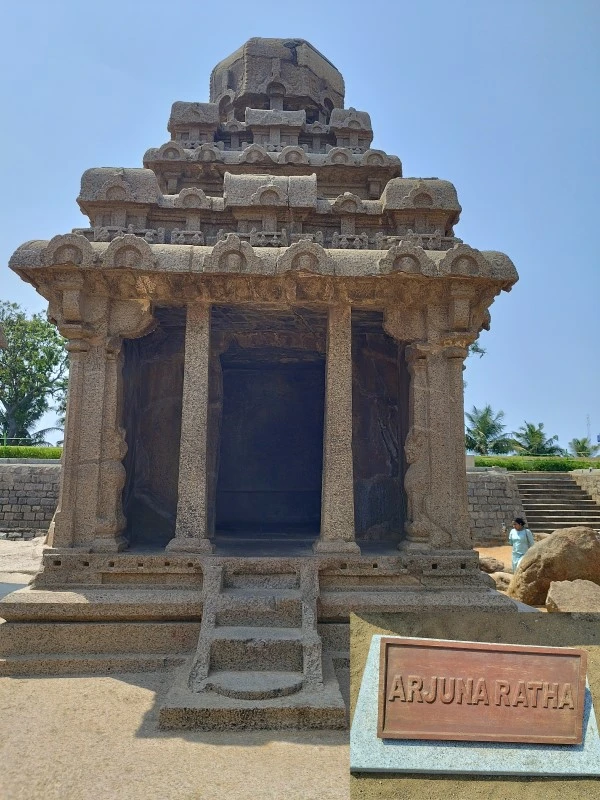
It is a slightly bigger structure and has more hollow space inside it. The structure has pillars which are also designed with carvings and has temple-like layers on the top. These designs are prevalent in a lot of Indian temples on bigger scales. Visitors can use the stairs and go inside to take deeper looks.
Bhima Ratha
Bhima is the Second oldest brother, and his monolith is the biggest of all. Bhima is also the strongest person of all the Mahabharatham characters. There are four pillars on both the front and the back sides of the structure. A lot of artwork could be seen on top of the structure.
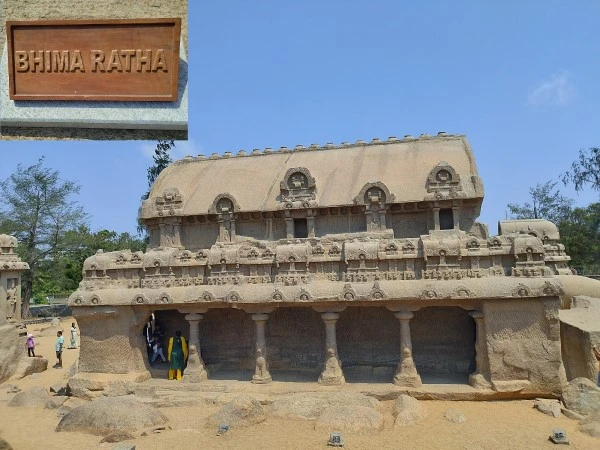
Besides, the huge part of the center is just a solid unworked rock. Even at the four corners of the structure, big parts of the rock are left uncut which also act like massive pillars.
Nakula Sahadeva Ratha
This Ratha is named after the two youngest brothers of all and is placed in front of the Arjuna Ratha and Bhima Ratha, outside of the line where other Rathas are aligned.
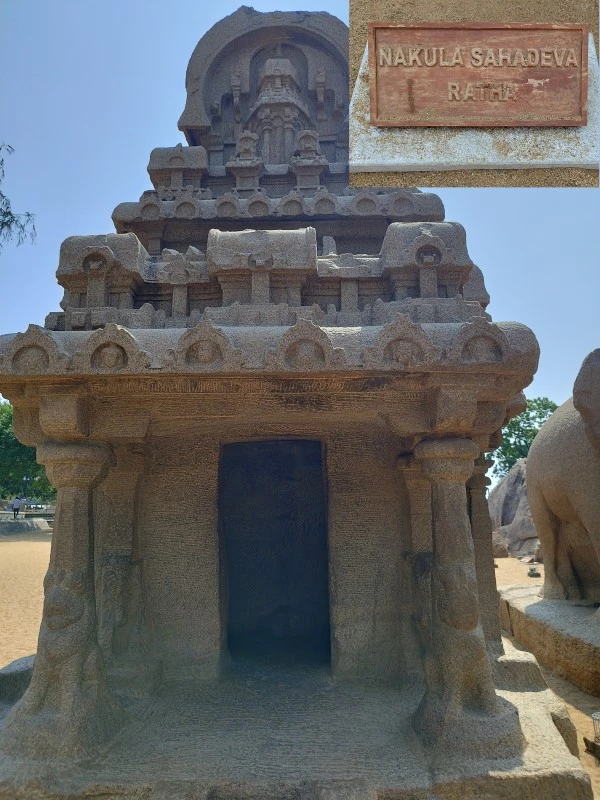
The structure looks simple with two pillars with lion-like shapes on it standing up front, and the inner section has a hollow chamber. There isn’t much sculpting work under the roof line of this Ratha. Though the towering structure above the roof is carved with fine details.
Dharmaraja Ratha
Dharmaraja is the honorary name of Yudhishthira, the eldest sibling of the five brothers. Dharma means justice and he is always depicted as a character who stands by the side of justice.
This Ratha is arguably the most detailed structure on the campus with its complex and geometrical designs sculpted from bottom to top. It has many pillars which are bigger than they are for other Rathas and has animal shapes carved into them. Each corner pillar has two human-shaped figures engraved into them.
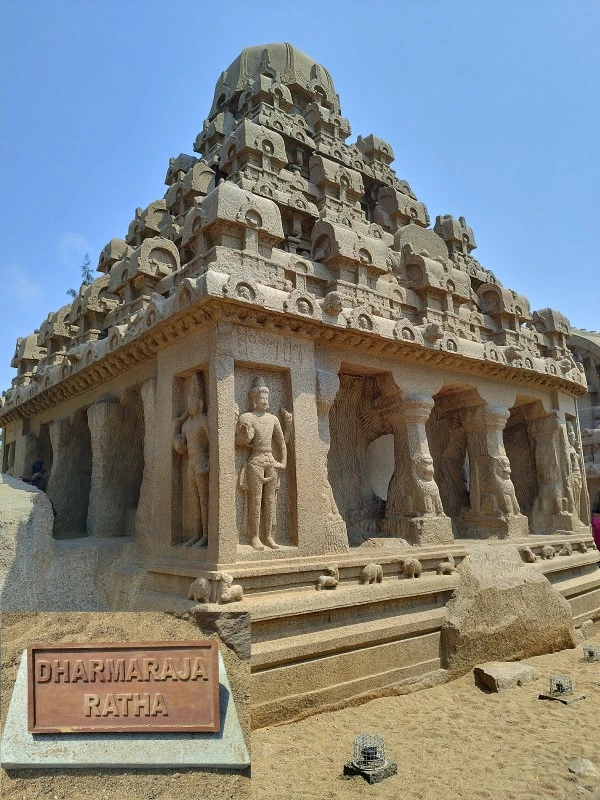
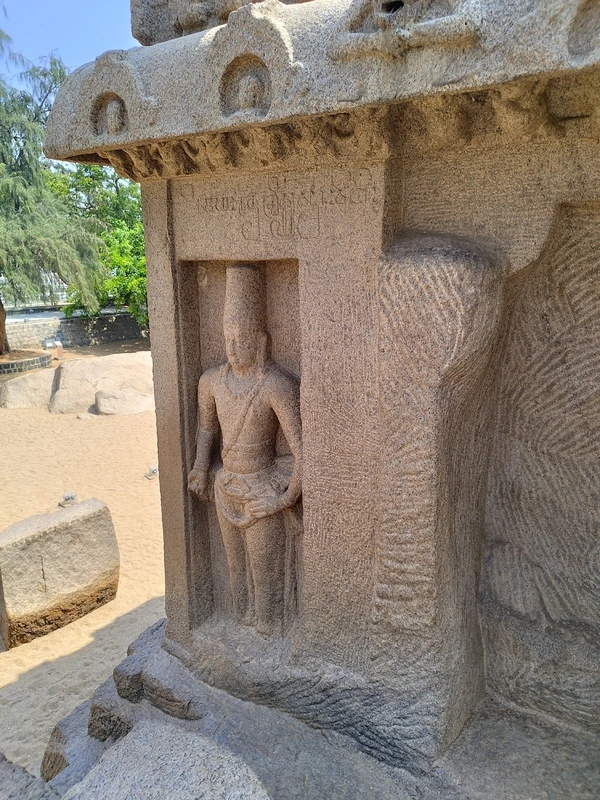
The monumental structure above the roof looks very intricate and yet symmetric. It has three layers of carvings and an octagonal Sikahara on top forming a cone-shaped structure called Gopuram.
Lion, Elephant, and Bull carvings
Apart from the five monoliths for the Rathas, there are a few other structures inside the campus.
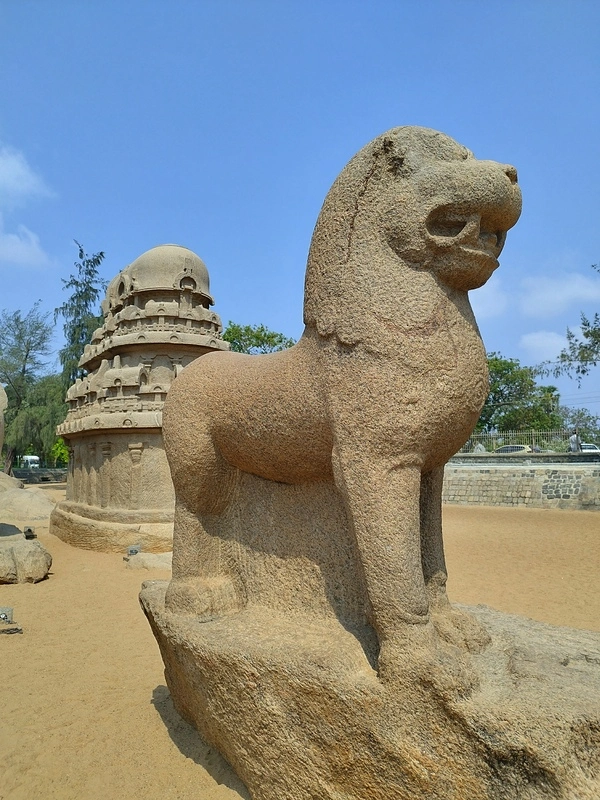
A lion-shaped carving is placed in front of the Droupadi Ratha in a standing position. It isn’t a very detailed structure and yet one would be easily able to notice two teeth in its mouth.
Behind the lion statue is an elephant-shaped monolith, which is also in a standing position. A few features like the tail, and the damaged ears are mildly visible. The trunk portion has two hollow portions instead of tusks.
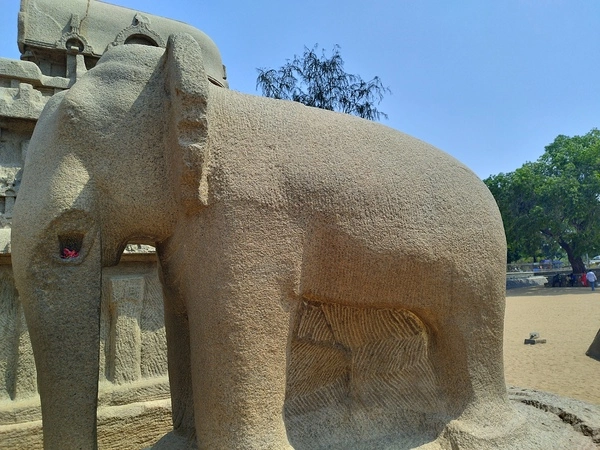
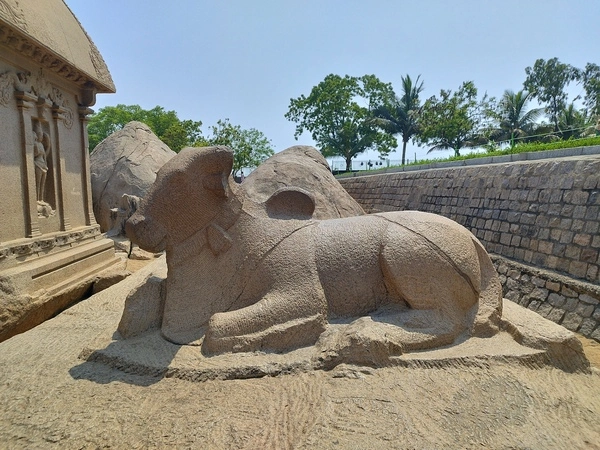
There is also a bull-shaped statue behind the Arjuna Ratha in a sitting position. The structure looks damaged enough and barely resembles a bull, with a hump on its back.
Plenty of rocks are left on the site without being carved. Be careful while climbing or walking on them, as they are slippery in nature. Security guards will be watching over the visitors for their well-being, and kindly cooperate with them to ensure safety.
Trees and shades
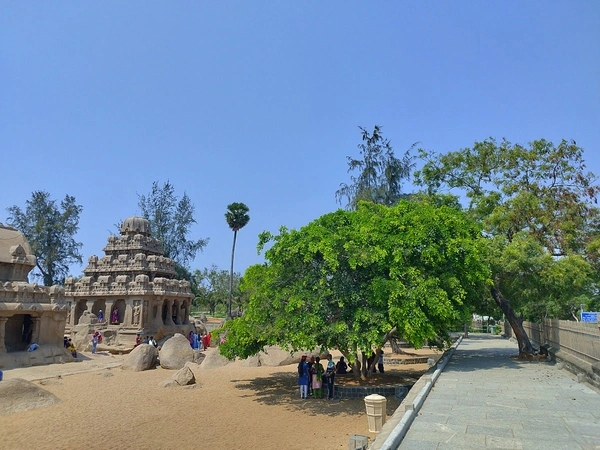
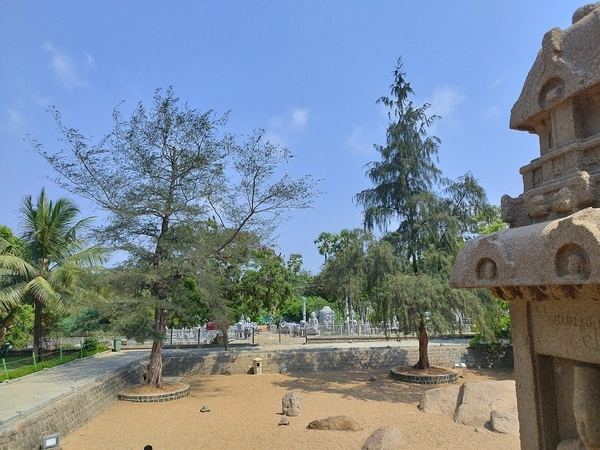
There are a handful of trees that are very old and protected with concrete walls, which also act as seats for visitors. People are allowed to rest under the shade of these trees. There is enough gap between each Ratha, where you can sit and relax if you find shade between them.
Parking
The parking lot is 200 meters away from the site and is totally free for any vehicles. The parking area is well-designed to accommodate a maximum number of vehicles, without causing a deadlock.

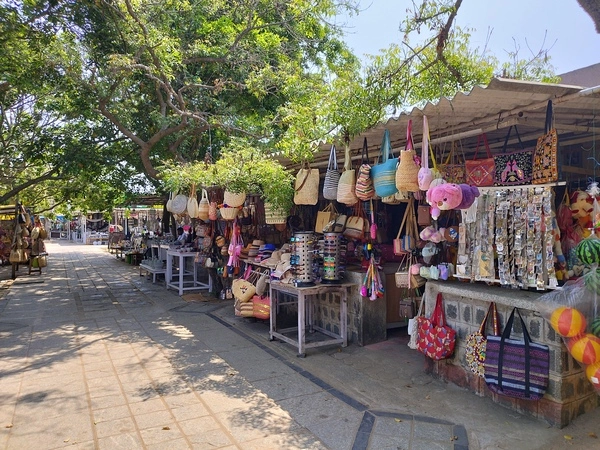
There are a variety of shops that sells toys, hats, and other artworks on the way to the site from the parking area. Restrooms are also available near these shops. Check out the signposts for guidance.
